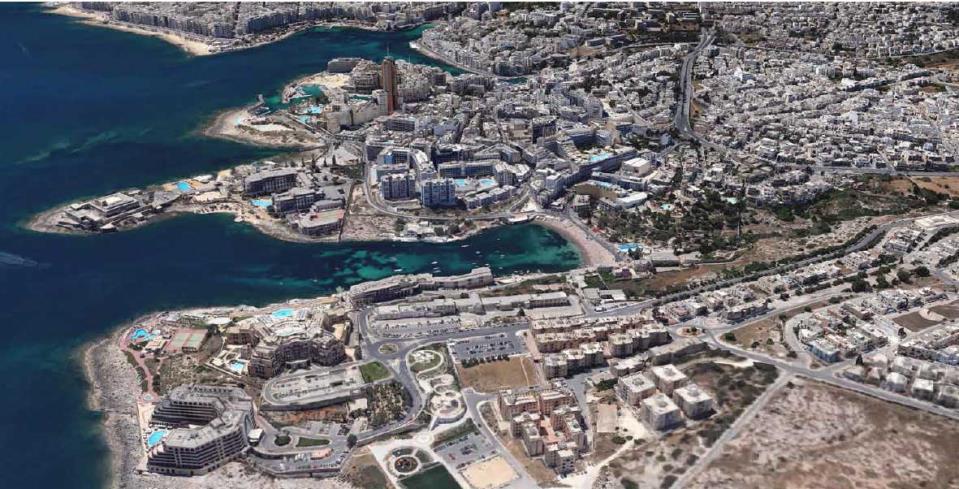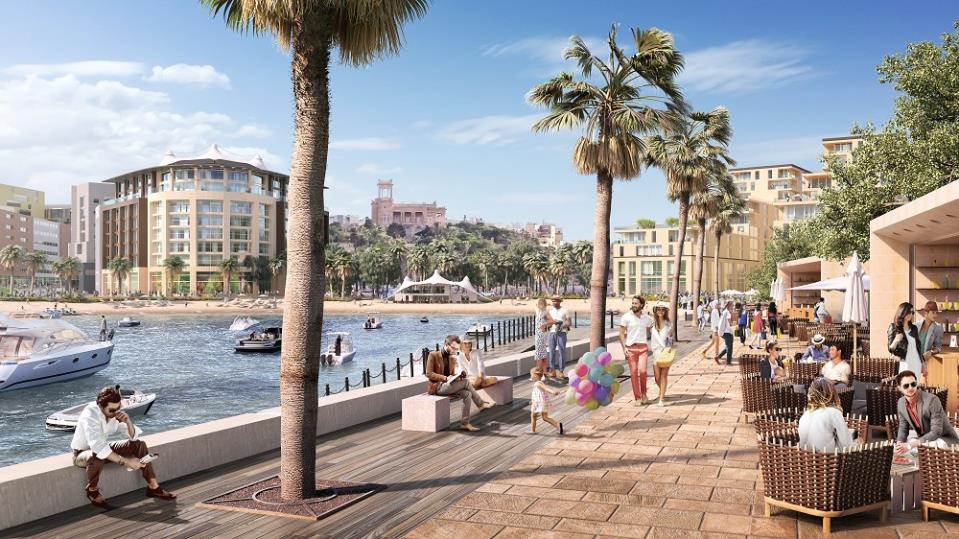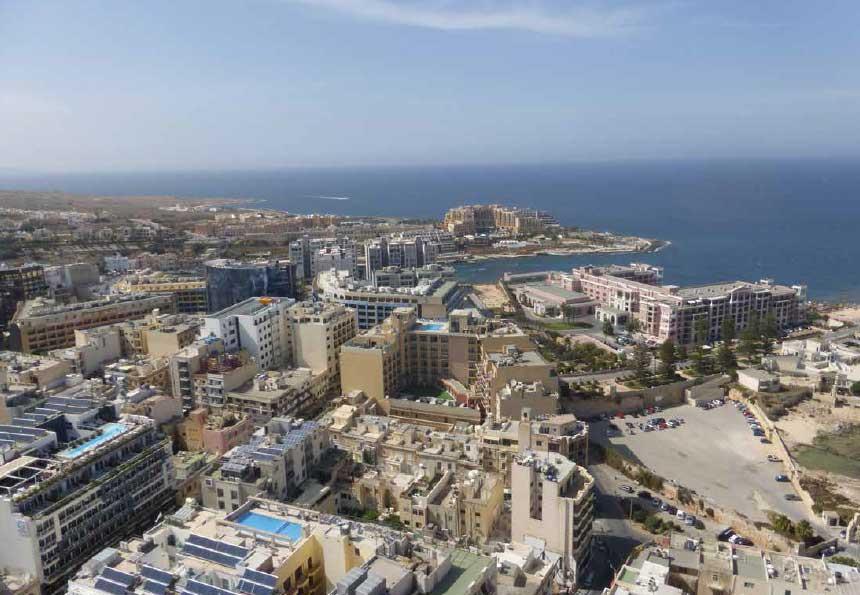The owners of St George’s Park Co Ltd (SGP), who own and run the majority of Paceville’s St George’s Park site, have said that they will mount the strongest possible resistance through all available fora, including taking the issue to the highest courts “should the draconian proposals in the master plan for the St George’s Park site be progressed in subsequent versions”.
The master plan has been a major cause for concern among Paceville residents, business owners, and developers alike. This stance by St George’s Park Co. Ltd indicates that if the government does not change certain aspects of the plan, then lengthy legal battles are sure to follow, and minor alterations to the plan might not be enough to stop it. They indeed might not be the sole entity to take matters to court if the plan remains the same
The SGP statement written in the document tabled during the Environment and Development Planning Committee was called “Interim submissions regarding the master plan in the Paceville Development Framework”, highlighting its concerns and issues with the current master plan proposal and readily available on the Parliamentary website.
In particular, SGP mentions the Paceville Plaza, which it argues was, according to a 2005 development brief, meant to be incorporated on the Mercury Tower site. In the third option included in the master plan however, the location of part of this plaza is being proposed to move from the Mercury House site, to the SGP site. This move would see a major part of a hotel owned by the SGP group replaced by a public open space.

“The need for a piazza was there in 2005 and remains equally powerful today. The logic that a piazza should be created using what is in effect a public space was powerful in 2005 and remains so today, as does the logic that one does not expropriate private land where a public space is available” for the said public piazza.
They argue that the reasoning given for this is to achieve the benefit of a distant view of the Dragonara gate from the northernmost part of the piazza. “It is self-evident that, even were it true, this so-called reason would not justify enriching the owners of the Mercury site at our expense and that of the public.” The group also says that the consultants did not take the topography of the area into consideration, as the public space (also referred to as a plaza) as is being proposed on the SGP site will be on inclined terrain which obviously will not allow the view of the Dragonara Gate from most of this proposed relocated plaza.

“The enlarged Paceville Plaza as shown in the master plan seeks to amputate the SGP site which currently houses a sizeable 300-bed hotel and its amenities as well as various underlying commercial establishments. This is unjust and unnecessary.”
The group argues that it had planned a €1 billion redevelopment of the SGP site, and that at the outset, “the competent authorities encouraged further investigation, however all subsequent attempts to move from an outline project to a detailed one, pursuant to all requisite analyses and studies, were frustrated by a response that a master plan was in the making and we should await its publication”.
SGP stressed that it was not included in the list of interested investors that the Planning Authority “saw fit to consult with”. The group alleges that this has resulted in a beneficial situation for some of the other major project developers, as some had been selling property on plan which has now materialised in the proposed master plan. This, SGP said cannot but lead to some doubt as to whether all developments have, right from the start, been accorded the due and equal attention and consideration that they all equally deserve.

Referring to the Mercury House site, the group also highlights the “unethical” Mott MacDonald connections with any development in the area were “not disclosed in the master plan document, as they were professionally bound to do”.
The group also highlights the “inconsistent and discriminatory tall buildings policy”, arguing that the master plan does not follow its own recommendation – that tall buildings along the coastline would not work within the skyline strategy – by allowing the development of three tall buildings on the Cresta Quay site.
The document also states that the group had planned to address the traffic situation, with regard to its own project, by building a tunnel which it would fund, from Regional Road to its site “so as to render the car largely unobtrusive at ground level”. The master plan option two included such a tunnel; however the document reads that it was excluded in the preferred option 3.

Plan assumes it can play around with existing residences – St George’s Park residents
A separate consultation document was tabled in Parliament, this time by the St George’s Park Owners Association (SGPO), which represents the 121 owners and 400 residents of St George’s Park.
In this document, the residents and owners argue that the master plan is flawed on two grounds. Firstly, that the experts appointed to draft the master plan “were not informed that a large part of St George’s Park is composed of a substantial number of privately-owned independent units, and secondly, that the experts were not made aware of the implications of the law regarding the coastal perimeter as being public domain with respect to the Villa Rosa site on Cresta Quay.
They argue that the plan ignores the existence of present residential and commercial communities at St George’s Park. “The draft master plan assumes that it can play around with existing residences and assign them other uses, or else plans their demolition in order that the property of others is enhanced in its development potential.”

The residents feel that the plan essentially means that they will be squeezed out of their residential property to make way for commercial/leisure development”.
They argue that the way the plan is presented would require a large amount of private property to be expropriated, and they contend that it is “highly doubtful” as to whether the proposed development at St George’s Park is in fact in the public interest, “particularly when considering the prejudice to be suffered by each of the numerous individual owners who would be dispossessed of their properties.”
Master plan has already diminished the value of some properties – GRTU
The GRTU – Malta Chamber for SMEs also submitted its concerns in the form of a document, and argue that the proposed plan has already resulted in diminishing the value of property and business of specific entrepreneurs, due to indications of which property would be appropriated to make space for roads, how high one building can rise over another an so on.

The GRTU argued that the plan seems to be designed on what appears to be a “tabula rasa, a blank slate, which is certainly not the case in practice”.
They said that the zone entering Paceville from Mikiel Anton Vassalli street is earmarked for development of public use, and that the value of property is, as a result, already being devalued by speculators “due to the envisaged use of the land. Employees are already resigning and moving on to work with competitors citing job security as a concern. Business plans are being distorted due to the area being earmarked for expropriation”.
The GRTU document also points out that changes in the area would also affect recently purchased property which previously enjoyed potential according to the local plan, which will be changed to accommodate the master plan.
The GRTU reiterated that the idea of a master plan is a good starting point; however “it must be ensured that we are not simply paying lip service when we say it is not cast n stone. Simply having the possibility of presenting one’s own case to moving part of the proposal by a couple of metres to one side or another is not real consultation and we trust that this would not be the case”.